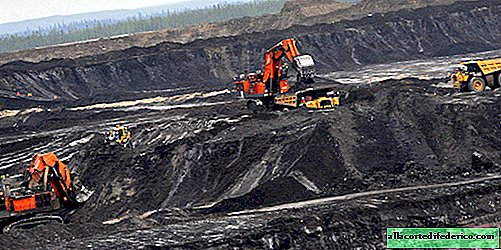Bitumen Sands - Canada's Environmental Disaster
The modern world is impossible to imagine without oil. The development of industry, the existence of cities and the welfare of entire states depend on black gold. Due to intensive exploitation, oil reserves are depleted, forcing oil companies to search for and develop more and more fields. In addition to liquid oil, there are other modifications of this mineral in the world. One of the types of unconventional hydrocarbons is bituminous (they are also bituminous) sands.

Bitumen sands are a mixture of sand and clay impregnated with bitumen. According to modern theories of oil formation, all fossil hydrocarbons, whether natural gas, oil or bitumen sands, are formed as a result of the conversion of plant residues buried underground. Bitumens are heavier and more viscous hydrocarbons that have lost a volatile fraction. In their chemical composition, they are also slightly different from oil. The main component of bitumen is asphaltenes, which, due to their viscosity at ordinary temperature, exist in the solid state. Deposits of tar sands are represented in nature, as a rule, in the form of formations lying at shallow depths, and therefore their extraction is possible by open-pit mining.
One of the largest tar sands deposits in the world is located in southwestern Canada, in the province of Alberta. Three fields in this territory contain up to 70% of all world reserves. The extraction of bitumen sands has been conducted here in an open pit since 2003. In order to get to the strata with minerals, mining companies cut down the forest that grows on the surface. Gigantic areas are cleared of vegetation and topsoil. But these disasters cannot be compared with the process of oil extraction from bitumen sands. In order to separate bitumen from the rock, heated water vapor is passed through the bitumen sand, which makes it more liquid. As a result of oil production in this way, a large amount of waste is generated: sediment ponds with toxic liquid, waste dumps contaminated with hydrocarbons and thousands of square kilometers of the territory unsuitable for human and animal life. Hazardous oil-containing spills annually kill hundreds of birds, and Alberta's oil refineries release tons of greenhouse gases into the atmosphere annually.

Although oil companies promise to fully reclaim all of the land involved in the production process, this seems unlikely. Ecologists, public organizations and representatives of the indigenous peoples of this province are trying to somehow influence the process of large-scale pollution of the region. But while world oil prices are higher than the cost of its production from bitumen sands, in the province of Alberta, more and more new lands will be involved in this process.


















